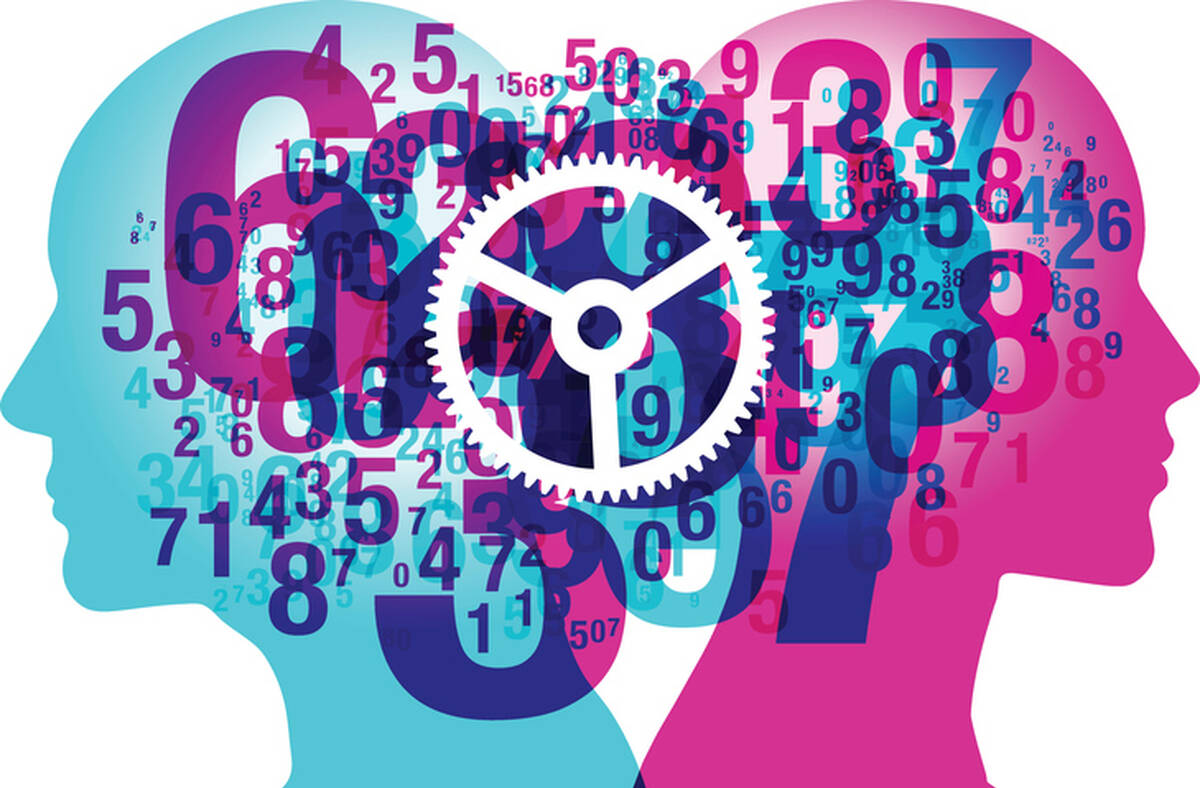Featured Faculty
Lawyer Taylor Professor of Psychology and Marketing, Weinberg College of Arts & Sciences; Professor of Marketing; Co-Director of the Center on the Science of Diversity

iMrSquid via iStock
Numerology is often brushed off as little more than superstition. Take the number thirteen, which is considered unlucky in many cultures. Or the number seven, which is often deemed auspicious. But logical people beg to differ. So what about numbers and their meanings would interest scientists?
To psychologists Galen V. Bodenhausen and James E. B. Wilkie, the meanings people ascribe to numbers can reveal much about our psychological biases, the way we learned math, and even how our brains cope with abstract concepts. Bodenhausen, a professor of marketing at the Kellogg School of Management, and Wilkie, an assistant professor at Notre Dame, discovered that we subconsciously assign genders to numbers. Even numbers are feminine; odd numbers are masculine.
It all started when Wilkie was struck with the notion that numbers could have a gender. He and Bodenhausen did a bit of searching on the Internet, which revealed a pile of anecdotes supporting his idea. A little more digging revealed that the phenomenon of people assigning gender to numbers dates back to ancient Greece and China. It was a topic ripe for research.
“Western cultures in the Pythagorean school—they have the sort of dichotomous view of reality. Everything falls into one of two categories,” Bodenhausen says. “There were all these things that were considered female in that philosophical system and all these things were considered male. Odd numbers were considered male and even numbers were considered female.”
“The Eastern tradition of yin and yang—those are also sort of fundamentally male and female ideas,” he adds. “They have the same sort of idea that odd numbers belong in the male category, the yang category, and even numbers fitting in the yin category. So we thought, let’s test this out and see if that’s the case.”
Experiments in Ambiguity
Wilkie and Bodenhausen recruited participants online for a series of experiments that probed the idea of gendered numbers. In each experiment, none of the participants knew the goal of the study was to evaluate a possible link between gender and number parity. Instead, they were told they would be judging the masculinity or femininity of various ambiguous items, like foreign names or pictures of the faces of babies.
Participants rated names shown next to a “1” to be significantly more masculine than those next to a “2”.
In the first experiment, English-speaking participants were asked to judge the masculinity or femininity of either Bulgarian or Spanish names with which participants were unlikely to be familiar. Alongside each name, on a random basis, was either a “1” or a “2”, which they were told was merely there to aid the researchers’ organization. In reality, Wilkie and Bodenhausen were studying how participants subconsciously reacted to the numbers themselves. Participants rated names shown next to a “1” to be significantly more masculine than those next to a “2”.
The second study was largely similar to the first, but this time Wilkie and Bodenhausen tested the effect on three-digit numbers. (To make this experiment distinct from the first, these numbers did not include ones or twos.) Again, names paired with odd numbers were deemed more masculine. In the third experiment, the researchers used baby photos instead of unfamiliar names, pairing each photo with an arbitrary number. Babies paired with odd numbers were rated as appearing more masculine, another statistically significant result.
“We think that there are probably multiple reasons why these associations exist. It isn’t just one simple explanation,” Bodenhausen says. One possibility, he says, could be our experiences when learning math. Division by even numbers is easy compared to odd numbers, leading us to develop an affinity for even numbers. Or the masculinity of odd numbers could relate to our understanding of the number one as a single, stand-alone entity (both figuratively and literally—the shape is quite solitary). The number two, on the other hand, suggests togetherness and cooperation—stereotypically feminine qualities. Those initial perceptions of “1” and “2” could then color people’s impressions of other numbers sharing the same category (i.e., other odd or even numbers).
Numbers (and Gender) Everywhere
Gender associations with even and odd numbers could have all sorts of implications—from retail pricing to casinos to professional athletes—but Wilkie and Bodenhausen say the trend they picked up on could reveal far deeper insights. “There has been an idea in cognitive science that the way we can get to abstract concepts is only by starting out in something very concrete and bootstrapping from that concrete beginning,” Bodenhausen says. “Something like a cow is a very concrete thing, but the concept of one cow? That concept of one turns out to be much more abstract than you would think it is.”
Given how much concrete experience people have with the differences between male and female roles, gender seems to be a common point of reference for understanding many different concepts—just look at how pervasive it is in ancient philosophical systems. Associating numerical concepts with gender may be one way people are able to grasp these otherwise abstract ideas.
Related reading on Kellogg Insight
Real Men Don’t Eat Very Berry Cheesecake: Manly preferences take their toll
Biases that Bind: The role of stereotypes in decision-making processes
Women and Math, the Gender Gap Bridged: Social equality frees women to match men
Wilkie, J. E. B. and G. V. Bodenhausen. 2012. “Are Numbers Gendered?” Journal of Experimental Psychology: General. 141: 206-210.